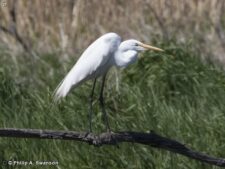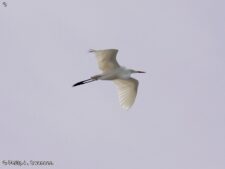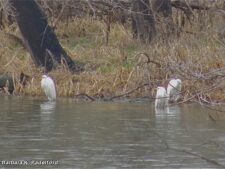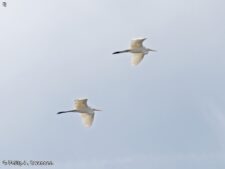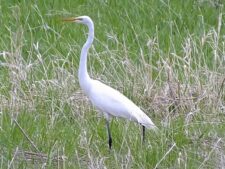
39 inches long with a 51 inch wingspan. The Great Egret is a large, long-legged, long-necked all white wading bird. It has a long thick yellow bill. Its legs and feet are black. During the early portion of the breeding season, long white plumes that extend beyond tail are grown on the shoulders. Also the bare parts also become more intensively colored with the bill becoming orange-yellow and the lores and eye ring lime green.
The Great Egret is a somewhat common migrant through the Omaha area that is uncommonly seen in the Forest. It may appear in early April through May and again in mid August through mid October.
The Great Egret has had various English names used in the past including American Egret and Common Egret. The Great Egret faced decimation during the early twentieth century by overhunting and this helped spark the formation of conservation and environmental organizations such as the National Audubon Society. As a matter of fact the Great Egret is the symbol for the National Audubon Society. It inhabits freshwater, estuarine, and marine wetlands, and nests colonially. It is adaptable which has contributed to its wide-ranging recovery from previous population decimation. It usually holds its head in an “S” curve while flying.
Disclaimer: The content of NatureSearch is provided by dedicated volunteer Naturalists of Fontenelle Forest who strive to provide the most accurate information available. Contributors of the images retain their copyrights. The point of contact for this page is: Phil Swanson.

